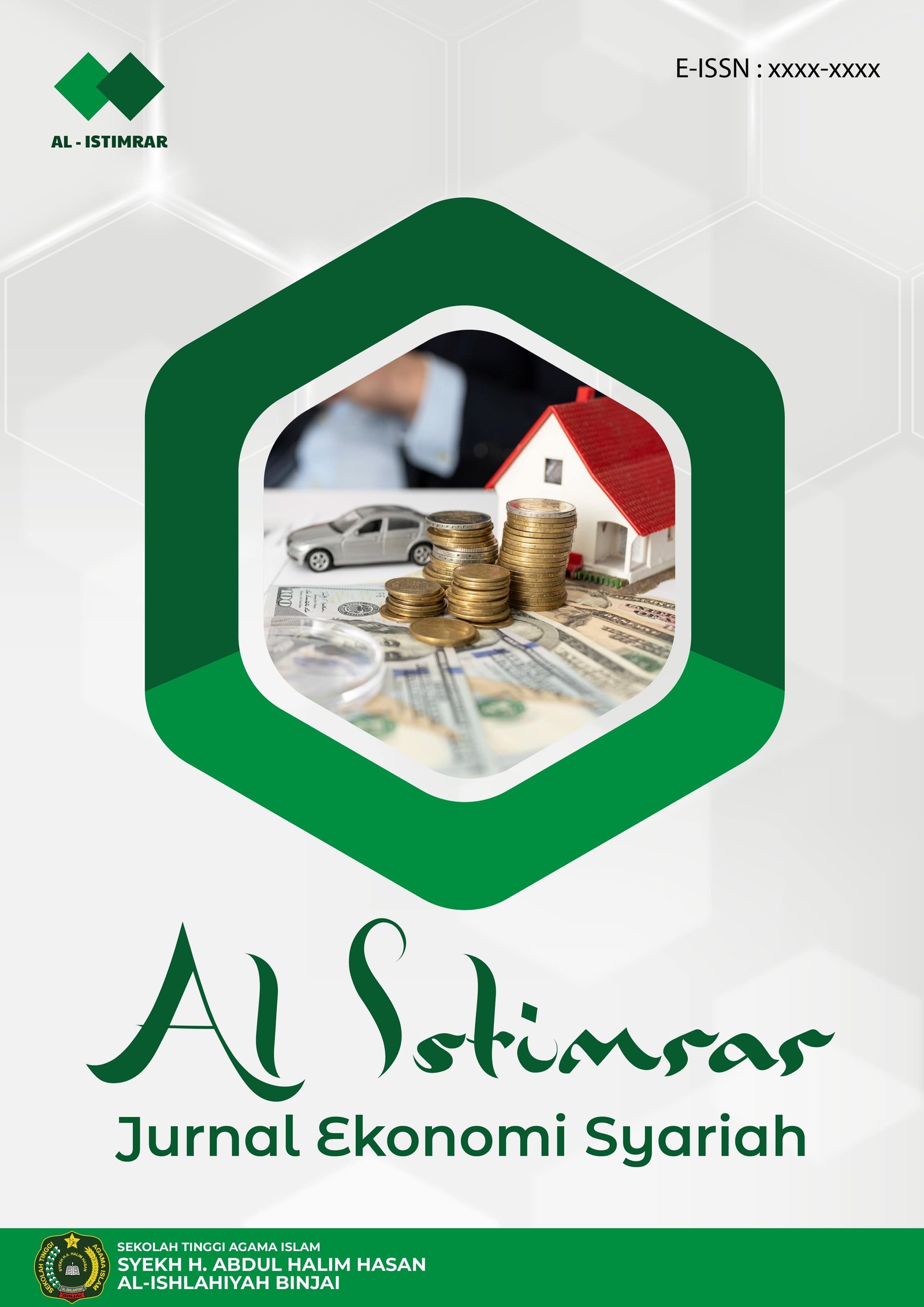Analisis Penggunaan Akad pada Produk Pembiayaan Multijasa pada PT. Bank SUMUT Syariah KCP Stabat
DOI:
https://doi.org/10.59342/istimrar.v1i2.136Keywords:
Aqad, Multiservice Financing, Bank SUMUT SyariahAbstract
This study focuses on the discussion of the implementation of the distribution of multi-service financing, the contract used in multi-service financing and analysis of the multi-service financing at PT. Bank SUMUT Syariah KCP Stabat. The research method used in this research is a descriptive qualitative research method with an empirical approach. In this study, researchers used a collection technique, namely by means of observation, interviews, and documentation. The results of the study explain that the implementation of the distribution of multi-service financing of PT. Bank SUMUT Syariah KCP Stabat to customers, namely customers who come directly to the Bank with the aim of submitting a multi-service financing application, the customer chooses which financing is desired, then fills out the financing application form provided by the Bank and is accompanied by predetermined requirements and guarantees. . If all the requirements have been met and the bank agrees to provide financing, then both parties agree to put this contract in an ijarah or kafalah financing contract and signed by both. The last stage the bank will disburse the required amount of funds through the customer's account. In practice at PT. Bank SUMUT Syariah KCP Stabat, multi-service financing using ijarah contracts and kafalah contracts. Analysis of multi-service financing products at PT. Bank SUMUT Syariah KCP Stabat are as follows: strengths, namely easy requirements, fast processing, competitive margins and profit sharing, sharia-compliant contracts. weaknesses, namely: officers in the financing department are still lacking in inviting the public, people still think that Islamic banks are the same as conventional banks and limited human resources. Opportunity is the interest of the public who want to do financing at Islamic Financial Institutions. Threat is the number of similar products offered by other conventional banks. Lack of public knowledge of PT. Bank SUMUT Syariah KCP Stabat.
References
Antonio, M. S. (2011). Bank Syari’ah: Dari Teori Ke Praktek. Gema Insani Press.
Arikunto, Suharsimi. Prosedur Penelitian Pendekatan Praktik. Jakarta: Rineka Cipta. 2010.
Az-Zuhaili, Wahbah. Fiqih Islam Wa Adillatuhu. Terj. Abdul Hayyie Al-Kattani, dkk. Jakarta: Gema Insani. 2011.
Etta, Mamang Sangadji. Metodelogi Penelitian. Yogyakarta: Andi Yogyakarta. 2010.
Fatwa Dewan Syariah Nasional No.09/DSN-MUI/2000 Tentang Ijarah
Fatwa DSN-MUI No: 10/DSN-MUI/IV/2000 tentang Wakalah.
Fatwa DSN-MUI Nomor: 11/DSN-MUI/IV/2000 Tentang Kafalah.
Fatwa DSN-MUI No.44/DSN-MUI/VII/2004 tentang Pembiayaan Multijasa.
Gunawan, Imam. Metode Penelitian Kualitatif: Teori dan Praktik. Jakarta: Bumi Aksara. 2013.
Harmain, H., Nurlaila, Olivia, H., & Syafina, L. (2019). Akuntansi Syariah di Indonesia (Arfan Ikhsan (ed.)). Madenatera.
Hasan, M. A. (2006). Zakat dan Infak (salah satu solusi mengatasi problema sosial di Indonesia). Kencana.
Junaidi. Pengaturan Hukum Perbankan Syari’ah di Indoneasia. Jakarta: UIN-Malang Pers. 2009.
Kasmir. (2017). Bank Dan Lembaga Keuangan Lainnya Edisi Revisi 2014. Rajawali Press.
Mas’adi, G. A. (2012). . Fiqh Muamalah Kontekstual (4th ed.). Raja Grafindo Persada.
Olivia, H., Tanjung, D. F., & Sugianto. (2020). Pengaruh Margin Keuntungan dan Biaya Administrasi Terhadap Minat Nasabah Pembiayaan Kpr Syariah Pada PT Bank Sumut Syariah Cabang Pembantu Binjai. Seminar Nasional Teknologi Komputer Dan Sains (SAINTEKS), 521–529. http://seminar-id.com/prosiding/index.php/sainteks/article/view/490
Yaya, Rizal. Akuntansi Perbankan Syariah. Jakarta: Salemba Empat. 2012
Downloads
Published
How to Cite
Issue
Section
License
Copyright (c) 2022 Al-Istimrar: Jurnal Ekonomi Syariah

This work is licensed under a Creative Commons Attribution-ShareAlike 4.0 International License.









